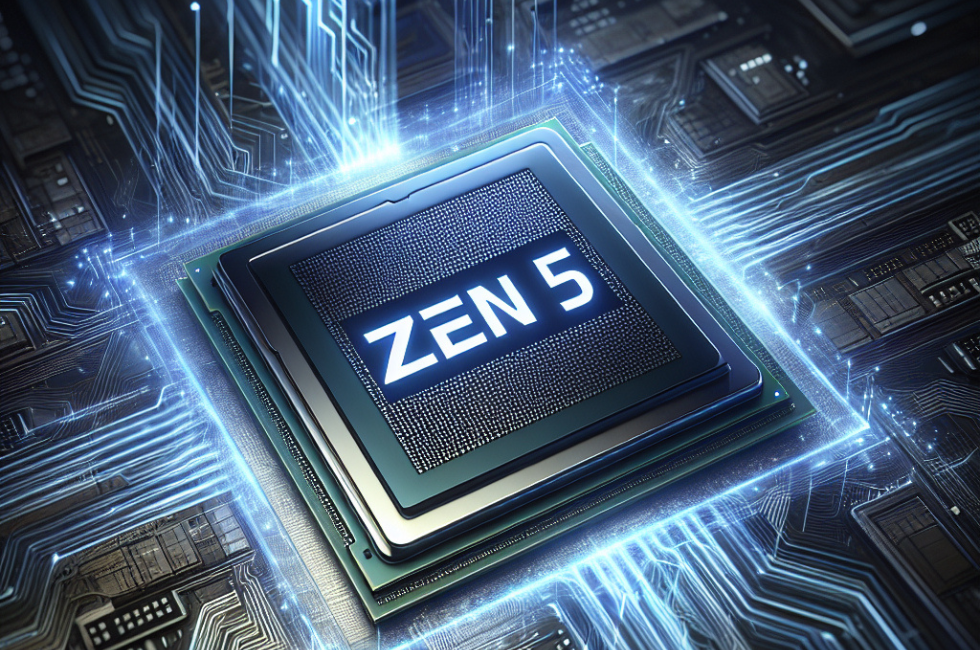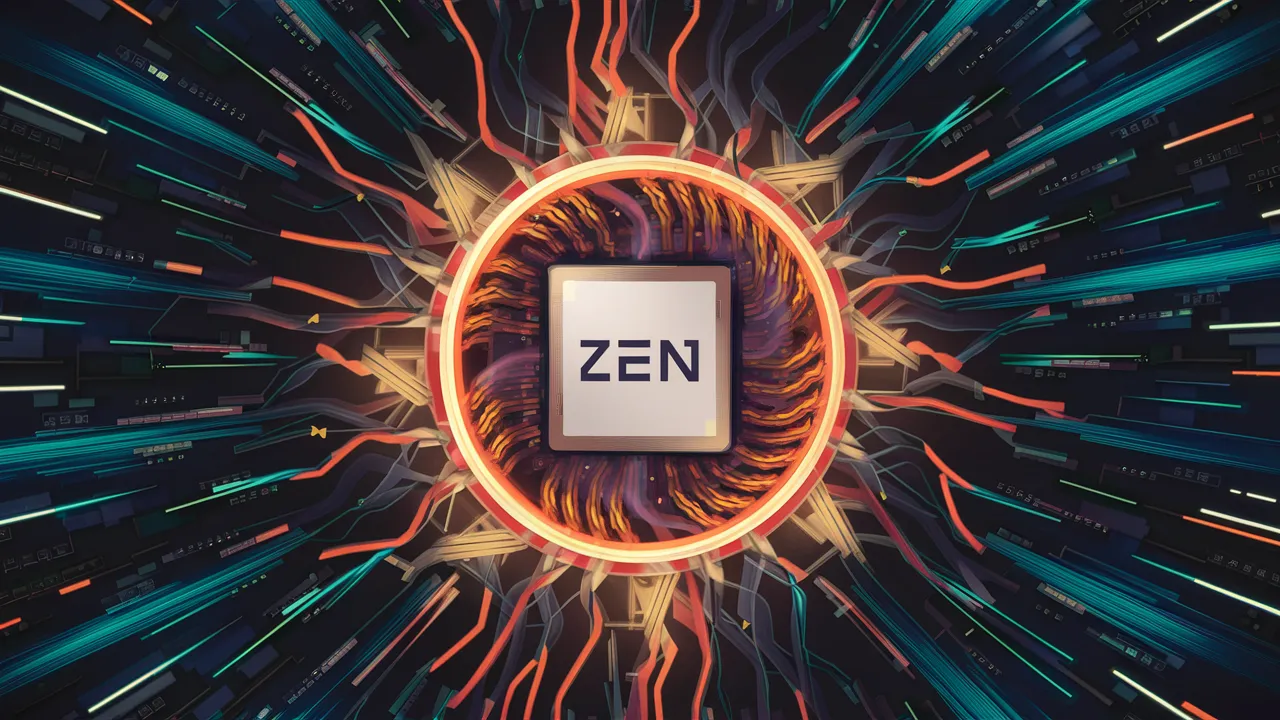AMD is going to introduce Zen 5 chips which could outperform any other processors they’ve built before. Thus, the new line of processors should be even more powerful than the already available ones and will be prioritized for simple and complex tasks alike. AMD is continually developing its technologies to increase the computing speed and also make computers more power efficient for use.
Introduction: With the new AMD Zen 5 Processors
AMD is about to give birth to its new Zen 5 family of processors, aside from the fact that they are supposed to outperform the previous models and provide specific functionality for desktops, laptops, and servers.
1- Desktop and Laptop CPUs
Performance Boost: Zen 5 gives the particular Desktop and laptop CPUs the capability to run faster.
Ryzen 8000 Series: Devotees are rising in fervor about the potential of Ryzen 9 and Ryzen 7 models to seriously challenge Intel in both gaming and professional markets.
Efficiency: Zen 5 will enable do more with less power and last longer on a single charge with notebooks equipped with it.
APUs Upgrades: Chips like Granite Ridge and Turin will certainly cut the Lake of graphics without the need for extra cards besides huge inquests.
2- Server Chips and Graphics
EPYC CPUs: Amid the battle to dominate the market, Zen 5 EPYC plans to stand out by being the best choice for servers, and being able to take on big tasks like data analysis, along with cloud computing.
Energy Efficiency: They moderately lower power consumption and thus are vital for data centers.
Graphics Leap: Extended visual responsibilities like graphical tasks will be made possible with advanced RDNA 4 tech.
3- Briefing details and outgoing
– Release Date: Café Ryuzen 5 CPU is being brought to market in late 2024, providing information at events such as Computex is the only remaining ground.
– Consumer Expectations: While people might be thrilled initially yet they may become skeptical until they think about the possible effects of these chips in real-life cases.
Here’s what we know about the AMD Zen 5 CPUs:
Codename: The CPUs with new names belong to different categories such as desktop (Granite Ridge) and mobile devices (Strix Point) as well as servers (Turin).
Architecture: The zen-5 design is the technology that AMD is using for designing these processors.
Manufacturing Process: Their process technologies will be a mix utilized by TSMC, which in turn enables speed and increased efficiency.
Release Date: Its release is due to take place at the end of 2024, as expected.
Expected Performance Improvements: It’s expected that they will significantly perform better than the Zen 4 ones, their performance power could reach even up to 30% and have higher clock speeds.
Socket: What makes this motherboard so special is that it would be the last socket that AMD plans to use for CPUs of this type and it’s known as AM5.
Integrated Graphics: Some of these CPUs may have an integrated graphics unit, which makes such models suitable for games designed with high graphical requirements.
Competition: They will contest Intel’s Arrow Lake processors that are consequently, ultra-performance chips.
What the next Zen 5 CPUs promises to do is to focus on powerful cores with no mix of other designs, which is good for your desktop if you need processing power of the highest level. Shifting in favor of speedy systems depicts that instead of slow computers, AMD wants to satisfy the users’ demands which can alter how we perceive computational speed. People are eagerly awaiting these future CPUS; which may help AMD become the single competitor in the market and have the best quality CPUs available.
Key points to remember
- One of the highlights of AMD’s Zen 5 CPUs is AMD’s continual commitment to manufacture the speediest microprocessors.
- The goal of Zen 5 is to use either the same processor or power core types leading to long-lasting and efficient microprocessors.
- At this point, such CPU-based CPUs might reinvent the desktop PCs that are now available. They could then foster more competition in the market.
AMD Zen 5 design and speed

- The introduction of Zen CPUs solidifies the technological advantage of AMD, allowing them to utilize new manufacturing methods that create less energy consumption and more processing power.
- The design for Zen 5 is likely to be done with a 3nm process that significantly downsizes – and increases in power – than the previous generation, Zen 4.
- This modification of design improves performance, and the machine can run multiple tasks, especially on desktop and server computers.
AMD Zen 5 compared to other top brands
- On AMD’s Zen 5 CPUs versus Intel’s Arrow Lake processors, both firms are aimed at making the fastest and the most up-to-date processors.
- While AMD might benefit in efficiency, thanks to their higher 3nm process, Intel is not out of the game yet. They also use their technologies, but all will determine the overall performance.
- Thus, this rivalry is a driving force that moves both companies into a higher level of memory performance.
AMD Ryzen Processors: A Quick Look Back
– Introduction: AMD Ryzen chips have the following past in terms of their evolution which started with the preceding Zen architecture and had a milestone with the cutting Zen 4, and the next step will be Zen 5.
History: The Ryzen trip, from the first Zen-based CPUs to delivering a great mix of power and efficiency, began the adventure. With each new generation came improvements: With each new generation came improvements:
Zen (Ryzen 1000): The Airline Marketing Department (AMD) will kick off on a high. Also, it will be able to compete well and hold its ground against other companies in business.
Zen+ (Ryzen 2000): Improved efficiency and energy generation.
Zen 2 (Ryzen 3000): Substantial increase in IPC (how well the digital tasks are done), and implementation of PCIe 4.0
Zen 3 (Ryzen 5000): An improvement in only one-thread performance and Instructions A Cycle Per (IPC).
– AM4 Socket: This ability to use the same socket to “plugin” with all those CPU generations is an extra plus in attracting customers.
AM5 Platform: Ryzen Second Time Round
1. AM5 Socket: A New Way Of Life
The new AM5 socket will usher in a lot of changes with the Seventh-Generation AMD Ryzen™ 7000 Series CPUs. In contrast to the previous AM4 which packed rows of pins in the CPU, the AM5 is an LGA (Land Grid Array) socket that has a grid of pins on the motherboard. This switch-over is being done to up the ante of per cpu performance bandwidth.
2. Motherboard Choices: X670 and B650
AM5 motherboards come in two main chipset options: The X670 and X670E versions will overall be performing the same, while the B650 will be retailing at a slightly higher price and offer advanced features found in X sequels. They come as a powerhouse for both the newest Ryzen processors. X670 is for headline chasers who require the best performance and overclocking capability while B650 balances costs and performance characteristics, especially for non-enthusiasts and the wide populace.
3. Connectivity Innovation: DDR5 and PCIe 5.0
The AM5 platform is an ultra-performative system with incredible records and performance outputs. DDR5 support, featuring data rate boosts and an array of power management advances, provides enhanced runtime performance and longer battery life. PCIe 5.0 featured on such boards provides twice the bandwidth to those who need shallower storage or graphics cards, signaling the way for fast storage technologies. By formulating such traits, AMD conveys a message that it is determined to enhance technology to its fullest extent.
4. Performance Analysis
In terms of valuing AMD Ryzen AM5 processors, it is important to look into their performance benchmarks, power efficiency as well as what is their position on the market.
5. Benchmarks and Real-world Performance
AMD Ryzen AM5 CPUs are cautiously exercised via both synthetic benchmark tests and practical application runs. The Ryzen 5 5600X3D is a powerful gaming processor that uses its AMD 3D V-Cache technology to produce top-notch performance. Cinebench 2024, however, is a real-world tests that demonstrate the advance over former processors evidencing the continuous development of the software architecture.
The capability of the processor to manage the thermal shrinkage of the power utilization to a lesser extent is however subjected to the Thermal Design Power (TDP) and Efficiency.
TDP is the best metric because it indicates the full load sustained by the CPU. Power consumption device solutions like Package Power Tracking (PPT) managing the threshold power efficiently is superior for AMD compared to Intel’s performance-per-watt.
AMD Ryzen vs.Intel: A Competitive View
The AMD Ryzen competes with Intel’s Raptor Lake CPUs on gaming and power efficiency. However, they often score the highest benchmark and game performance scores. The Ryzen 7 8700G, as an example, presents a variety of clock speeds that are high enough to perform diverse tasks including gaming and professional purposes for consumers.











